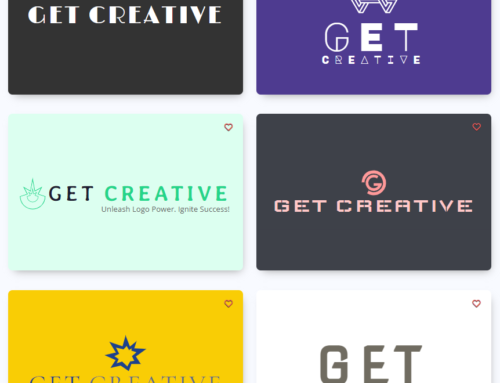You need people who you can email, and you need them quickly. And if you could get them cheaply, that’d be great, too.
That’s the mindset many small business owners find themselves in when they’re on the phone with a list-purchasing company: “We need new people to email to support our sales team”. Acting on that moment of desperation, however, can cause more harm to your business than good.
You may have been contacted by a marketing company offering to sell you an email marketing list. They’ll probably offer to sort it so it just contains people in your target market – people in the right age group, income bracket, location, life stage etc. It can sound like the perfect way to get your marketing strategy off to a great start, especially when they confirm that everyone on the list has opted-in to receive emails about products or services like yours.
Unfortunately, using a bought email list can cause serious damage to the reputation of your small business and get your IP address blacklisted by spam prevention software. So, in this article we look at ways to get an email list together and why buying one is unlikely to be a good idea. We also suggest some ethical strategies for building a productive email marketing list that’ll grow into a valuable business asset.
Ways to create an email marketing list
Let’s start with a quick summary of the three main options for getting an email marketing list together.
- Buy a list: You can pay a list provider for the names and email addresses of people who are likely to be interested in what you have to offer. For example, if you had a property maintenance company, the list might include several thousand people in your city or local suburbs who own a home.
- Pay to use someone else’s list: In this case you never see the email list. Instead, you simply pay an email marketing company to send your email out to people who match your target audience. They may be able to provide you with statistics around how many people opened the email or clicked a link within your message. They could also help you craft the messages and build an ongoing campaign – for a fee of course.
- Build your own opt-in email list: This is where people agree to receive marketing emails from you. They’ll usually do this because they think you can provide information that offers them some benefits. They’ll also want to know they can trust you to not give their email to others or fill up their inbox with too many messages, especially about things they’re not interested in. We’ll look at ways to establish this trust later in this article.
The dangers of paying for email lists
Here are some of the main reasons to avoid buying an email list or pay to use someone else’s, no matter how tempting it may seem.
You’ll probably get marked as spam
Sometimes an email list has simply been put together by bots that crawl over the internet looking for email addresses. They’re easily spotted with their @ symbol followed by a web address or online mail service address, like gmail.com. This method of collecting email addresses is highly unethical.
Marketing companies may have email lists that people have opted into, but those people didn’t agree to receive marketing emails from your business. While they may have agreed at some point to get emails from the marketing company, that may not have included emails about your type of business. The danger is, the first time potential customers see your business name your business can come across as inconsiderate, unethical and a little desperate.
Either way, your email message is likely to get labelled as spam with a single click from multiple recipients. Your email address is now on its way to being automatically blocked by spam filtering software right across the world.
The list can be for sale because it has no other value
A good quality email list is a valuable asset and is normally included in the valuation of a business when it‘s sold. In the meantime it continues to pay dividends each time it is used as part of an organisation’s wider marketing plan. So you have to ask why anyone would sell their marketing list, unless it is full of out-dated, over-used or otherwise anonymous email addresses.
Your IP and email addresses could get blacklisted
When a ‘dead’ email address keeps getting lots of emails sent to it, but they’re never opened, anti-spam organisations can use that address to make it look like the emails are being delivered. That keeps spammers happily using it, while they’re identified and blacklisted one after another.
Anti-spam organisations also put fake email addresses onto the internet, so they end up in unethically created lists. Every time they’re used, they automatically identify the sender as a spammer.
When you pay for an email list, you have no way of knowing whether all the addresses are real or not. If you end up being blacklisted it can take months of valid sending to restore the reputation of your IP address (website and email) and your ability to reach even everyday email recipients.
Recipients may have already opted out
Email marketing regulations require senders to include a simple way for recipients to opt-out or unsubscribe from an email list. If you buy a list, recipients who have already opted out may not have been removed from it. That means you’re more likely to annoy people who actively unsubscribe from unsolicited marketing emails. In other words, the reputation of your business can be damaged before you even get started.
If one of your recipients happens to be in Europe, you’ll be breaking European law, which also includes requiring people to actively opt-in to receive emails from you. So you can’t even use a pre-ticked box when asking them to subscribe.
Respectable email marketing services won’t let you use a bought list
If you plan to use a good email marketing service, you’ll need your own opt-in email list, not one you’ve purchased. If you use a service that doesn’t require this, chances are it will suffer from low delivery rates because someone has used an unethical email list before you.
How to build your own opt-in email list
Getting people to give you their email address and approval to send them marketing messages is all about gradually building trust and a sense of value. Here are some of the ways small business owners do this.
Create reasons for people to visit your website or business
Share helpful and valuable content that also shows your knowledge, skills and leadership in your field. Include a call to action that leads to more information or special offers on your website. If nothing else, increasing traffic to your website will help it to appear higher up in search engine results.
Offer in-depth resources in exchange for email addresses
Having established your expertise and experience through free blog posts, you can lead people to higher value resources. They can access these if they give you their email address and agree to receive updates and promotional emails from you. These ‘next-level’ resources typically include ebooks, practical templates, webinars or online tools.
You can now blog about these resources or mention them in social media posts and expert opinion pieces in local media. Be sure to provide an easy click-through or url to a landing page with more about the resource and how to sign up for it. You can also promote new resources on your website’s home page, so visitors are immediately aware of them. Even if you only get a few email addresses each time you promote a resource, it’s surprising how quickly your email list can grow.
Encourage people to share your messages
Whenever you send out a marketing email or add a new post, it pays to include a quick suggestion that the recipient might like to share the message or special offer with someone they know who would find it useful. If you include the option to opt-in for similar content in the future, if they haven’t already done so, your email list will continue to grow.
You can make sharing easier with single-click share buttons to various social media channels. These buttons also create a short message and a link to a webpage version of your marketing email. From there potential new customers can explore your previous posts, as well as sign up to receive email notification of new posts and special offers.
Plan ahead to build trust and win customers
Email marketing can be a very cost effective part of your wider marketing strategy. It’s important to keep in mind that people will only give away their email address if there’s something in it for them. Having earned their trust you need to respect it, because they can unsubscribe at any time. Asking people for feedback about things like the content you provide and the frequency of messages helps to show you care and allows you to adjust your strategy. In the meantime, using this article to create a plan and start building content your customers will value can help you to convert each new email lead into a loyal customer and brand promoter.




